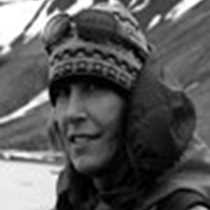Magdalena Bay & Boca de Soledad
Our morning began with drama: the sun smeared a line of orange along the eastern sky as clouds scudded to the north and breakers crashed over the sand bar at the Boca de Soledad. Given that we are here to see the longest-migrating mammal, the nearly-hunted-out comeback whale, the baleen whale unique in its method of scooping pits of mud for small invertebrates, it felt fitting.
We bounced in our Zodiacs and ducked from spray, but the gray whales were in their element. Single adults as well as mothers and calves surfed near the tumultuous Boca, and although the calves were but weeks old, they easily navigated the currents and swells. Pangas from Lopez Mateos carrying whalewatchers in pursuit of the same experience joined us in the morning. In the afternoon, however, the bay was ours. We returned to see what the changing tide had wrought, and were rewarded with fantastic views of gray whale cows and calves moving against the current. In some cases, the calves used their mothers like gymnasiums, drifting and lolling over their barnacled heads and backs.
Those who ventured ashore in to comb the dark, magnetite-rich sand beach for treasures found adventure as well. Coyote tracks, sea turtle bones, and the jaw of a bottlenose dolphin allowed shore walkers to rearticulate the life that takes advantage of these protected waters. And even they had a chance to watch whales: spyhopping grays punctuated the water, their sharp rostrums dramatic against distant dunes.
Music and a feast from Ballena Gris, a restaurant in the nearby town of Lopez Mateos, allowed us to celebrate our day with the grays, those comeback whales, those desert whales, those amazing creatures who move along the western coast of North America, stitching together people and places that ordinarily would feel worlds apart.
Our morning began with drama: the sun smeared a line of orange along the eastern sky as clouds scudded to the north and breakers crashed over the sand bar at the Boca de Soledad. Given that we are here to see the longest-migrating mammal, the nearly-hunted-out comeback whale, the baleen whale unique in its method of scooping pits of mud for small invertebrates, it felt fitting.
We bounced in our Zodiacs and ducked from spray, but the gray whales were in their element. Single adults as well as mothers and calves surfed near the tumultuous Boca, and although the calves were but weeks old, they easily navigated the currents and swells. Pangas from Lopez Mateos carrying whalewatchers in pursuit of the same experience joined us in the morning. In the afternoon, however, the bay was ours. We returned to see what the changing tide had wrought, and were rewarded with fantastic views of gray whale cows and calves moving against the current. In some cases, the calves used their mothers like gymnasiums, drifting and lolling over their barnacled heads and backs.
Those who ventured ashore in to comb the dark, magnetite-rich sand beach for treasures found adventure as well. Coyote tracks, sea turtle bones, and the jaw of a bottlenose dolphin allowed shore walkers to rearticulate the life that takes advantage of these protected waters. And even they had a chance to watch whales: spyhopping grays punctuated the water, their sharp rostrums dramatic against distant dunes.
Music and a feast from Ballena Gris, a restaurant in the nearby town of Lopez Mateos, allowed us to celebrate our day with the grays, those comeback whales, those desert whales, those amazing creatures who move along the western coast of North America, stitching together people and places that ordinarily would feel worlds apart.




